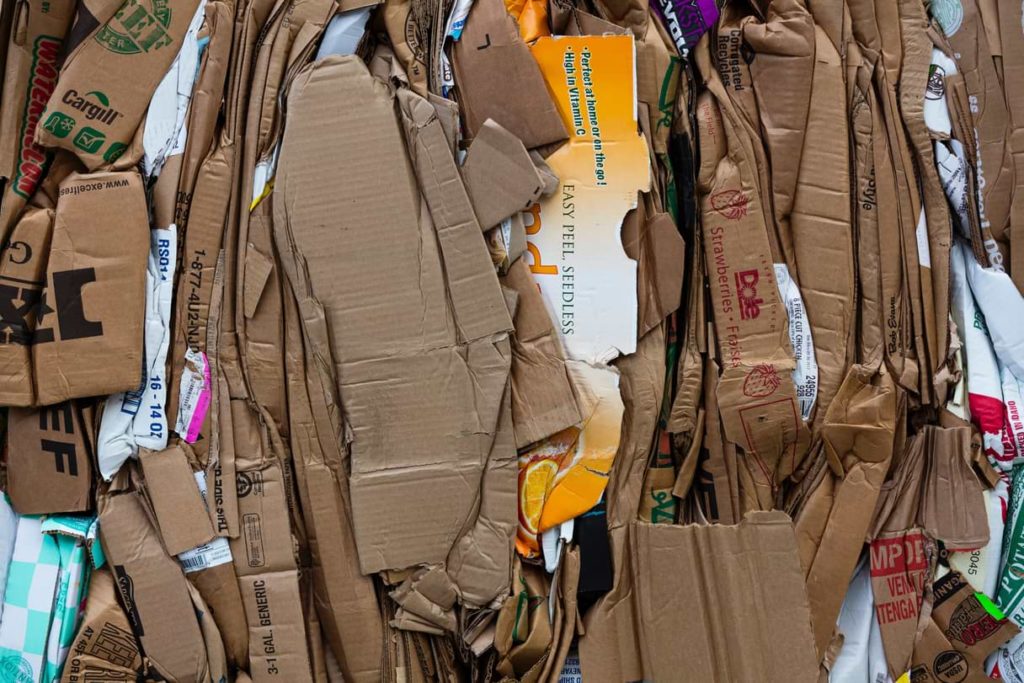With more and more people concerned by the effects of global warming, it’s become clear to many businesses that environmentally harmful practices that were socially acceptable in the past are now what could be turning potential customers away from them. In fact, a new trend in the market shows that customers (especially in the millennial age bracket) prefer companies that take greener and sustainable steps.
One of the ways businesses do this is by making the switch from plastics to more biodegradable or reusable materials like paper and metal. Instead of plastic utensils and straws, for example, consumers would opt for metal utensils and straws made out of bamboo, glass, or metal.
But how sustainable and environmentally friendly really is the switch from plastic to materials like cardboard?
Biodegradable vs. Non-Biodegradable
One of the things consumers look for is if a business uses biodegradable or non-biodegradable materials. Biodegradable substances are those that break down or decompose naturally. Factors like air, water, soil, sunlight, and bacteria help break it down. This makes it safe for the environment and, after degradation, can be used as fertilizer or compost for other organic materials. The most common biodegradable materials in the market are fruits, vegetables, flowers, animal products, and plant-based products like paper.
Non-biodegradable materials, on the other hand, do not degrade as easily because they were processed. While these materials come from natural origins, these are synthesized and processed to the point where normal oxidation does not degrade it as quickly as natural materials. While it will degrade eventually, it takes much longer than biodegradable materials. These include items like metals, plastics, glass, batteries, and chemicals.
While biodegradable materials are generally seen as the green and sustainable solution, that’s not to say that using non-biodegradable materials cannot be green. Most non-biodegradable items in the market can be classified into two categories: reusable and disposable.
Non-Biodegradable: Reusable and Disposable
Non-biodegradable items can either be reused (the sustainable and greener solution) or disposable. A good example of these are a comparison between reusable and disposable coffee cups. Take the three common types of cups used for coffee – ceramic mugs, reusable plastic cups, and Styrofoam cups. The first two are obviously the sustainable solutions as they can be reused several times while Styrofoam cups are disposed of after one use (and, because of its composition, take years to decompose and become a part of everyday pollution).
Based on the costs of production, use, and post-use, it took more energy to produce ceramic mugs and reusable plastic cups compared to mass-produced Styrofoam cups. However, the reusable benefits of the first two make up for it, while the post-use costs to dispose and degrade disposable Styrofoam cups outweigh its easy manufacturing costs.
So, it goes to show that while ceramic and plastics are non-biodegradables, when made into reusable materials, it can still be environmentally friendly.
Is Cardboard Biodegradable?
Cardboard is a thick paper-based product often used in product packaging and shipping. Compared to single-use plastic product packaging, bubble wrap, and other non-biodegradable alternatives in the market, cardboard seems like the greener solution.
If you’re not recycling cardboard for a different purpose, cardboard’s carbon substances allow it to decay within a matter of time. Depending on environmental conditions, it can be composted in a matter of around two months.
However, not all cardboards are easily recyclable. Some cardboards are specially treated, making it more difficult for the natural pulp fibers in cardboard to degrade. If cardboard is laminated or wax-coated (which requires layering cardboard with chemicals that make it harder to tear or break down), it can become more difficult to recycle.
For example, if you see the packaging of most tissue boxes, you’ll notice that the texture outside the box is different from the one inside. While the inside is usually untreated cardboard, the outside has been treated with plastic and other chemicals and colorings to give it a smooth finish. This makes it more difficult to compost.
Cardboard Is Biodegradable, But That Doesn’t Mean It’s Totally Environmentally Friendly
However, just a brand switches from plastics to cardboard – which we’ve learned is biodegradable and recyclable – does not mean it’s totally environmentally friendly.
While paper is more biodegradable in comparison to plastics, its production is not environmentally friendly. Earlier, I mentioned how a comparison between coffee cup materials showed that the cost of production, use, and post-use could determine just how effective non-biodegradable items could be to be more sustainable. But what if we use this on biodegradable materials as well?
Cardboard, like a lot of paper-based products, are made in paper mills. Paper mills are one of the biggest industries responsible for chemical pollution as their chemicals create air and water pollution. It also accounts for four percent of the world’s energy use. That doesn’t sound like a lot, until you realize that it’s the 5th largest consumer in that pie.
Cardboard, therefore, is biodegradable and recyclable, but it’s not totally environmentally friendly. However, compared to one-use plastics, it may be the lesser of two evils if we want to cut down on our waste. Hopefully, in the near future, there will be better and greener options for packaging to truly cut down the waste of packaging.



